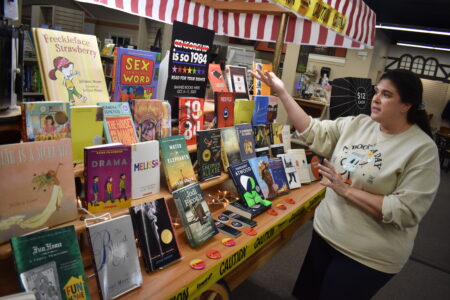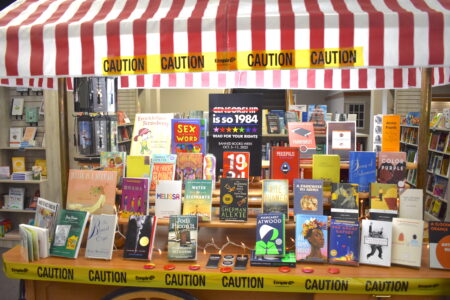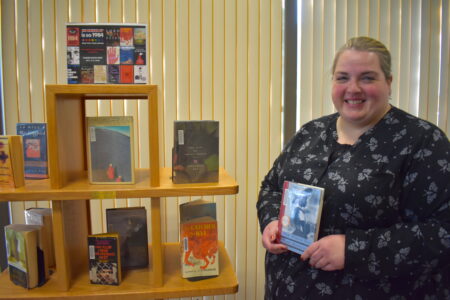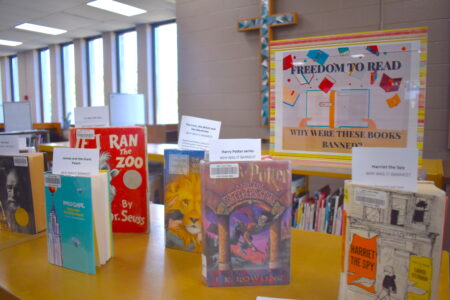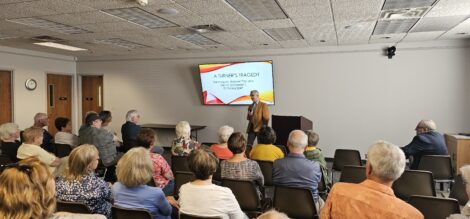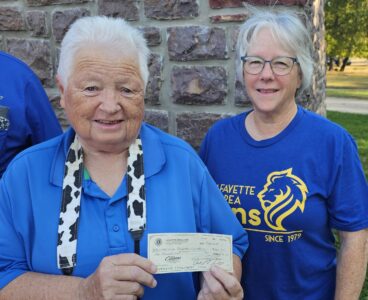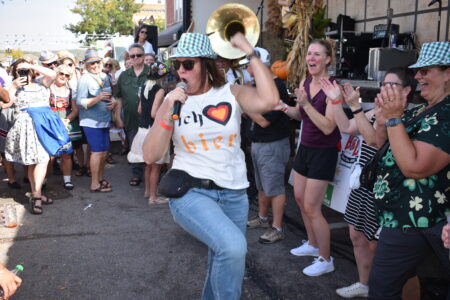Targeted for censorship
New Ulm libraries put banned books on display
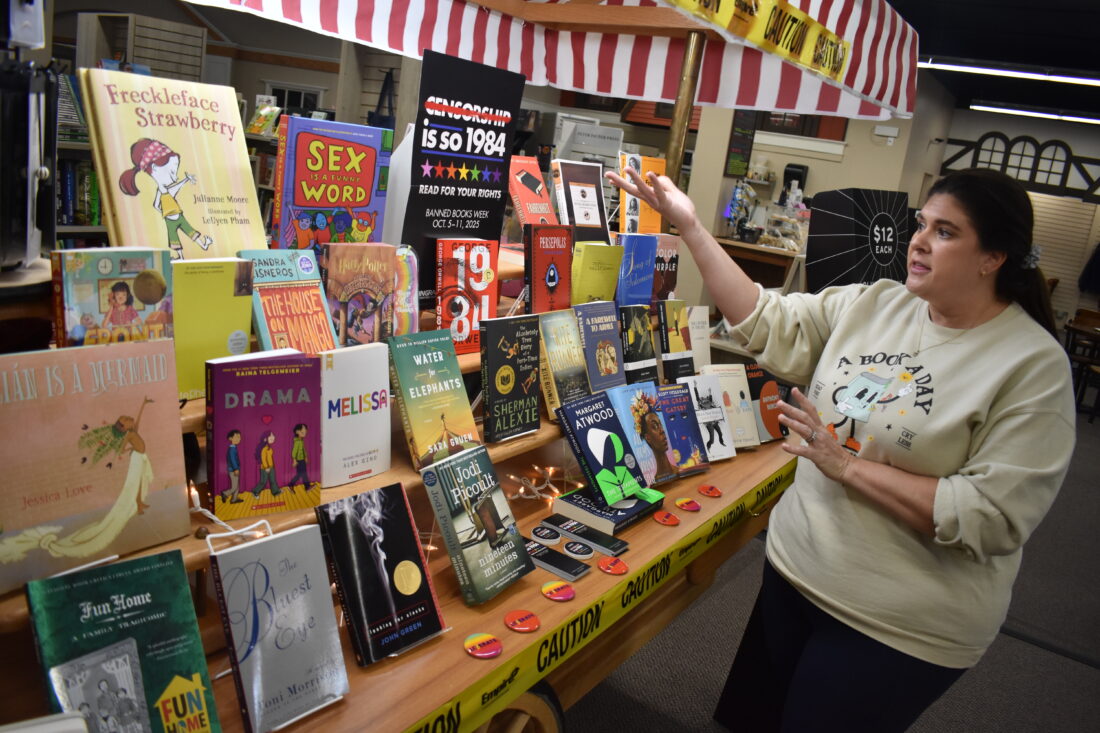
Tamara Klawitter shows Lykke Books display for Banned Books Week. Klawitter said the display is a conversation starter with patrons who have read some of the books or are interesting reading the others.
NEW ULM – This week, area libraries and bookstores are putting a spotlight on the books facing the greatest challenges during Banned Books Week.
Anyone visiting the New Ulm Public Library (NUPL), Martin Luther College (MLC) library and Lykke Books will notice displays celebrating Banned Books Week, which began Oct. 5 and concludes Saturday, Oct. 11. This year, the American Library Association (ALA), along with the Banned Books Week Coalition, have organized under the theme “Censorship is So 1984. Read for Your Rights.”
This theme is a reference to the George Orwell novel “1984,” a book that has faced periodic censorship for its depiction of an authoritarian government watching over everything its citizens think and do.
NUPL’s display features an assortment of the most frequently targeted books for censorship, including “Catcher in the Rye,” “The Adventures of Huckleberry Finn” and The Bluest Eye,” to name a few.
The banned books display at MLC’s library features many children’s and young adult books that have courted controversy over the years. Each of the books in MLC’s display includes an explainer card as to why the book is usually targeted for censorship.
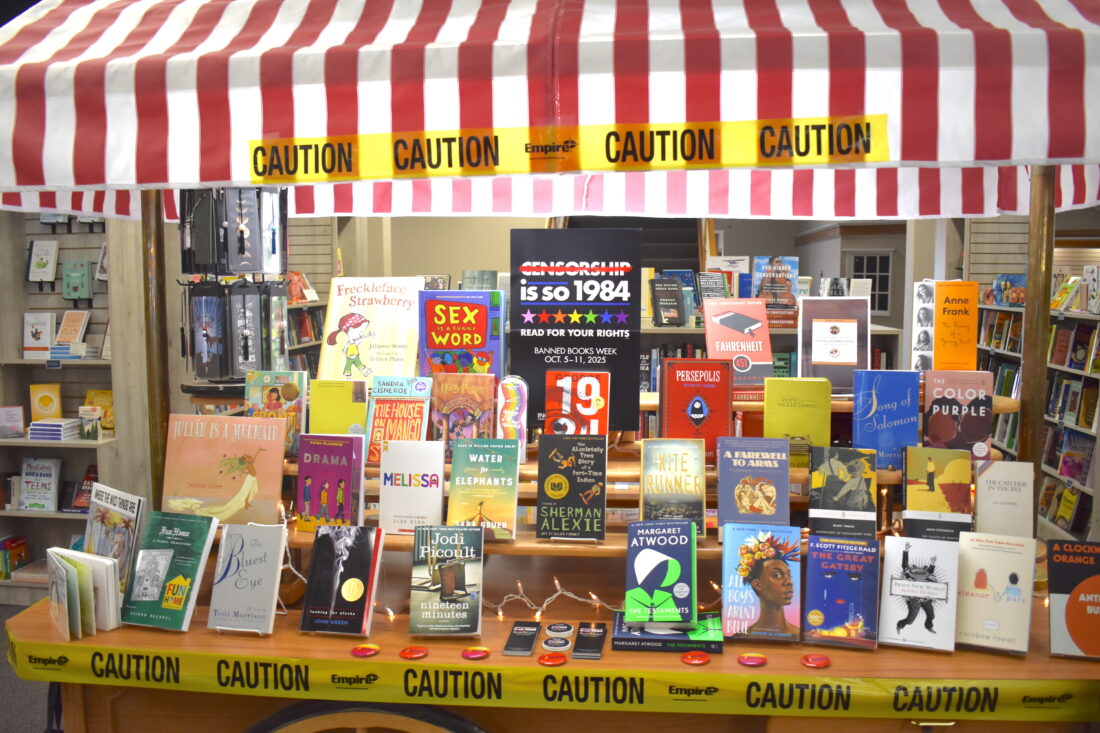
In honor of Banned Books Week, Lykke Books expanded it display of banned books.
The card included with the 1962 kids’s book “A Wrinkle in Time” explains that the book was criticized for including overlapping references to science, supernatural forces and religious references. Early opposition to the book was based on the belief that “A Wrinkle in Time” opposed Christian beliefs, despite including direct quotes from the Bible.
The Banned Books display at Lykke Books is located at the center of the store. Store employee Tamara Klawitter said Lykke Books always has a section dedicated to banned or censored books, but the display is expanded during Banned Books Week. She said the display is a great conversation starter.
“People see the display and they start talking about the books on it that they have read,” Klawitter said. “Then they start talking about the ones they would like to read.”
Klawitter said sometimes patrons were surprised to see certain books on the banned books display. “Anne Frank: Diary of a Young Girl,” surprised many, including Klawitter.
“It is shocking that this book about a historical event could be banned,” she said.
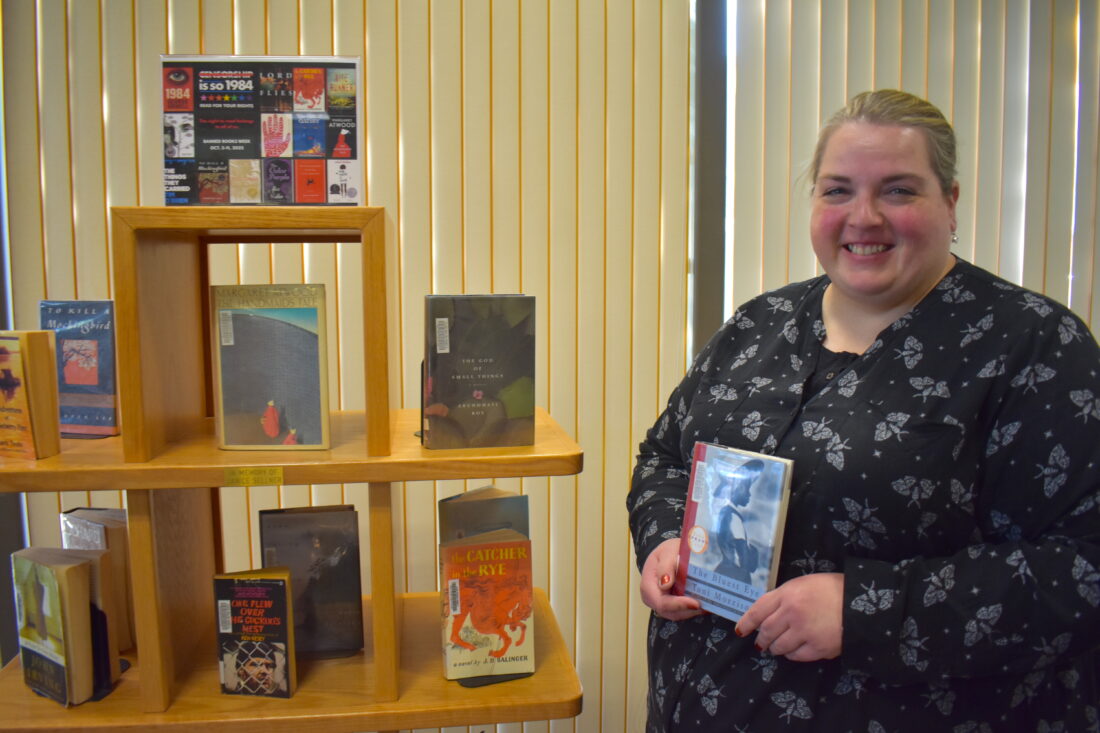
New Ulm Public Library Director April Ide holds a copy of “The Bluest Eye,” by Toni Morrison, a book that was among the top ten most challenged books of the last year. “The Bluest Eye” is one of several books featured in the library’s display of frequently banned books.
This is the overall goal of Banned Books Week: to raise awareness and promote the freedom to read books that have faced challenges.
Every time a library, school or media center receives a formal request to remove a book from its collection, this is referred to as a challenge.
Each year, the ALA’s Office for Intellectual Freedom (OIF) documents attempts to ban or remove reading material from libraries. Last year, 5,813 challenges were recorded, which was a decrease from 9,021 challenges reported two years ago.
The most challenged books of the last year were “All Boys Aren’t Blue,” by George M. Johnson; “Gender Queer,” by Maia Kobabe, “The Bluest Eye,” by Toni Morrison; “The Perks of Being a Wallflower,” by Stephen Chbosky; “Tricks,” by Ellen Hopkins, “Looking for Alaska,” by John Green, “Me and Earl and the Dying Girl,” by Jesse Andrews; “Crank” by Ellen Hopkins; “Sold,” by Patricia McCormick and “Flamer,” by Mike Curato.
Though book-banning attempts are on the rise across the country, they remain uncommon in New Ulm.
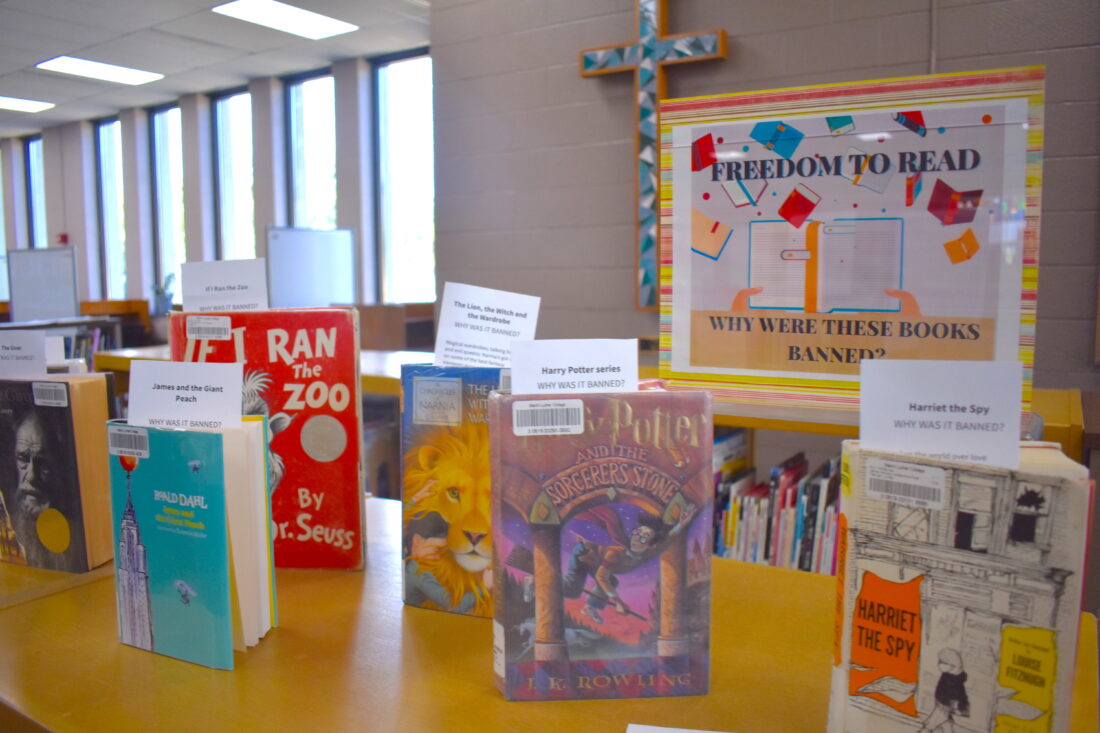
This week to celebrated Banned Books Week, Martin Luther College’s (MLC) library is featuring a “Freedom to Read” display highlighting books that have faced censorship attempts over the years. Each book has a card listing why the book is usually targeted for censorship.
NUPL director April Ide said the library has not received a formal challenge on a book in several years.
The last challenge occurred in 2018 with the children’s book “The Beach at Night.” The book was originally written in Italian and translated into English. The concern at the time was about the appropriateness of the language for a book in the children’s section.
“We’ve been lucky,” Ide said. “Our patrons understand we respect the right of others to select material they feel is appropriate for them. It is up to the parents and families to make those choices for themselves.”
NUPL does have a formal process for patrons who wish to recommend that the library reconsider an item in its collection. The form must be filled out online and must include a recommended action the library should take providing a reason.
Ide said the recommendation would then be reviewed by her and two other librarians, who would make a final recommendation. However, recent changes in Minnesota statute have made it harder to ban books from public libraries.
Minnesota Statutes 134.51 states a public library must not ban, remove, or otherwise restrict access to a book or other material based solely on its viewpoint or the messages, ideas, or opinions it conveys.
This means that in Minnesota, material cannot legally be removed from a public library because one person or group disagrees with the content.
Ide said after this statute was passed, the NUPL updated its material reconsideration policy to reflect the change.
NUPL will not restrict a book based on age or require parental consent before allowing the book to be checked out.
“We encourage parents to be involved in what their child reads,” Ide said. “If parents have concerns about what books their child is renting, they can have that discussion with them, but the library will not place age restrictions.”
NUPL does consider requests to include materials as well.
“We get informal requests for material to add all the time,” Ide said. “We do try to meet as many of the requests as possible.”
Typically, if NUPL does not have a specific book, patrons are able to request materials through in inter-library loan system. The system connects every library in the state.
Ide said NUPL’s banned book display had generated interest from library patrons. Tuesday morning, she noted one patron had checked out “Lord of the Files” from the display.
At Lykke Books, there were several books from the banned display that were selling well. Klawitter noted that many of the store’s most popular books have long been subject to censorship attempts. She said the store is always restocking “Harry Potter” and “Hunger Games” books, which have frequently made the ALA’s list of most challenged books.
Other challenged books that remain popular include “The Great Gatsby,” “Catcher in the Rye,” “Perks of Being a Wallflower,” “Drama,” and “1984.”
As of Tuesday, Lykke Books had sold out of copies of “The Grapes of Wrath” and “The Handmaid’s Tale.”
- Tamara Klawitter shows Lykke Books display for Banned Books Week. Klawitter said the display is a conversation starter with patrons who have read some of the books or are interesting reading the others.
- In honor of Banned Books Week, Lykke Books expanded it display of banned books.
- New Ulm Public Library Director April Ide holds a copy of “The Bluest Eye,” by Toni Morrison, a book that was among the top ten most challenged books of the last year. “The Bluest Eye” is one of several books featured in the library’s display of frequently banned books.
- This week to celebrated Banned Books Week, Martin Luther College’s (MLC) library is featuring a “Freedom to Read” display highlighting books that have faced censorship attempts over the years. Each book has a card listing why the book is usually targeted for censorship.

